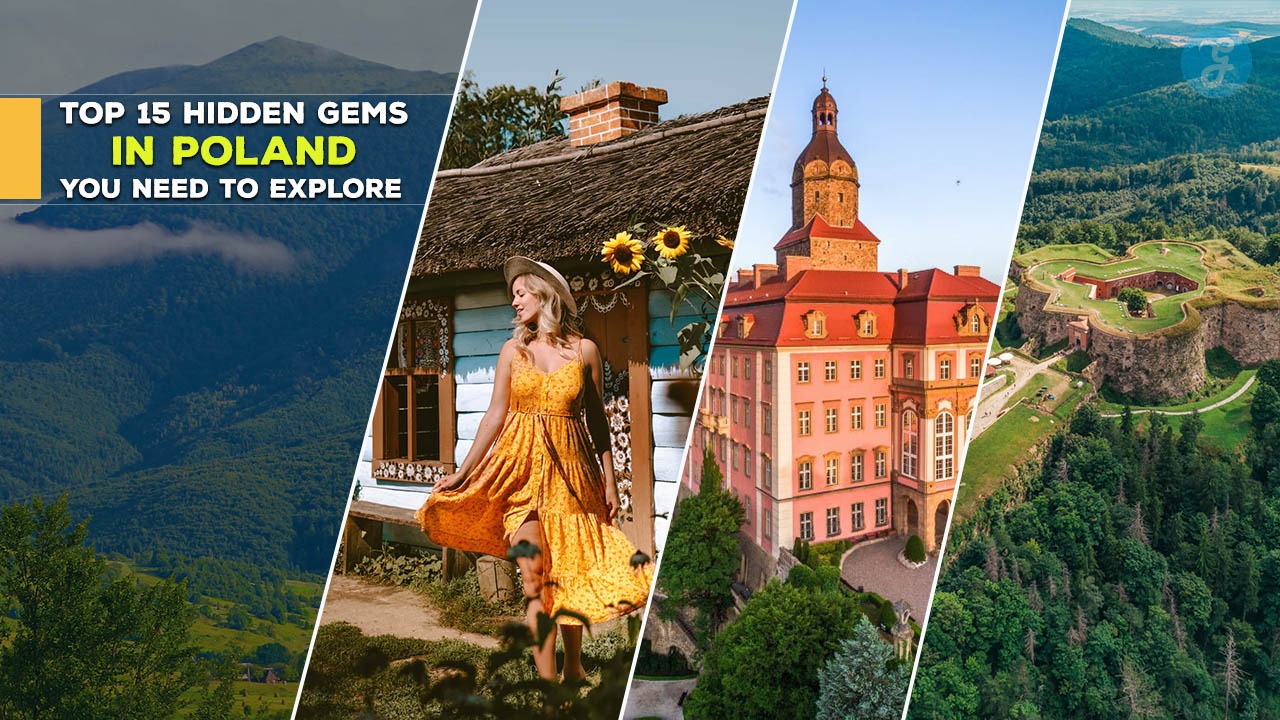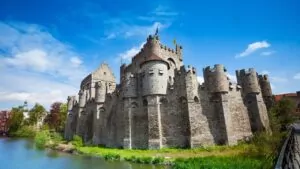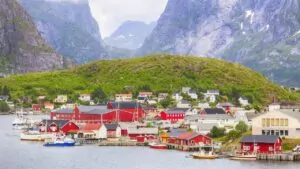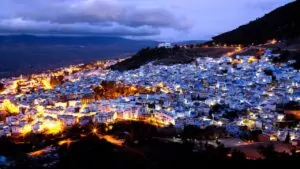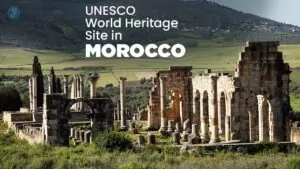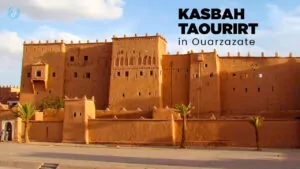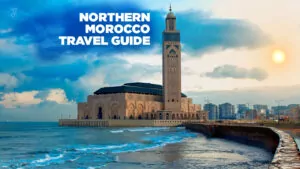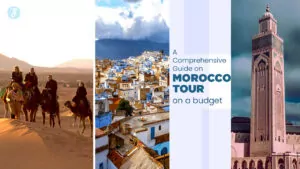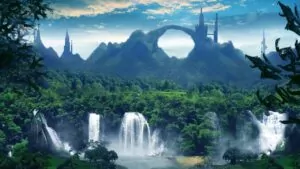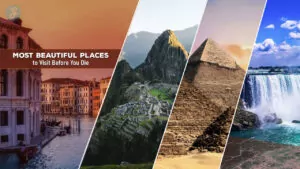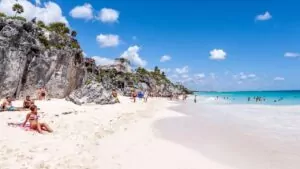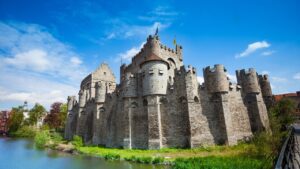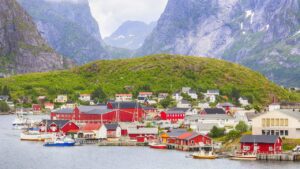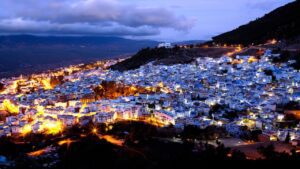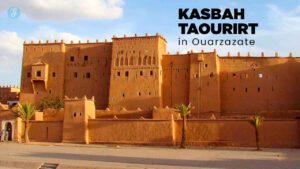Poland, a country rich in history, culture, and natural beauty, offers more than just its famous cities like Warsaw and Kazimierz. Beyond the well-trodden tourist paths lie hidden gems in Poland, waiting to be discovered.
In this article, we’ll take you on a journey through 15 lesser-known but equally captivating destinations that showcase the true essence of Poland. From enchanting forests to medieval castles and unique cultural experiences, these hidden gems will inspire you to explore the heart of this Central European nation.
15 Best Hidden Gems in Poland You Must Visit
Poland is a country of contrasts, where bustling cities meet serene countryside, and well-known historical landmarks coexist with lesser-known, yet equally captivating destinations. While popular spots like Białowieża, Kazimierz, and Wieliczka Salt Mine often dominate travel guides, there are numerous hidden gems waiting to be discovered by those who seek a more authentic experience.
These off-the-beaten-path locations offer a unique glimpse into Poland’s rich cultural heritage, stunning natural landscapes, and charming small towns. Whether you’re an adventurous traveler or someone looking to escape the crowds, exploring these hidden treasures will reveal a side of Poland that is often overlooked but deeply rewarding. Join us as we uncover the top 15 hidden gems in Poland that you need to explore on your next journey through this remarkable country.
1. Białowieża Forest
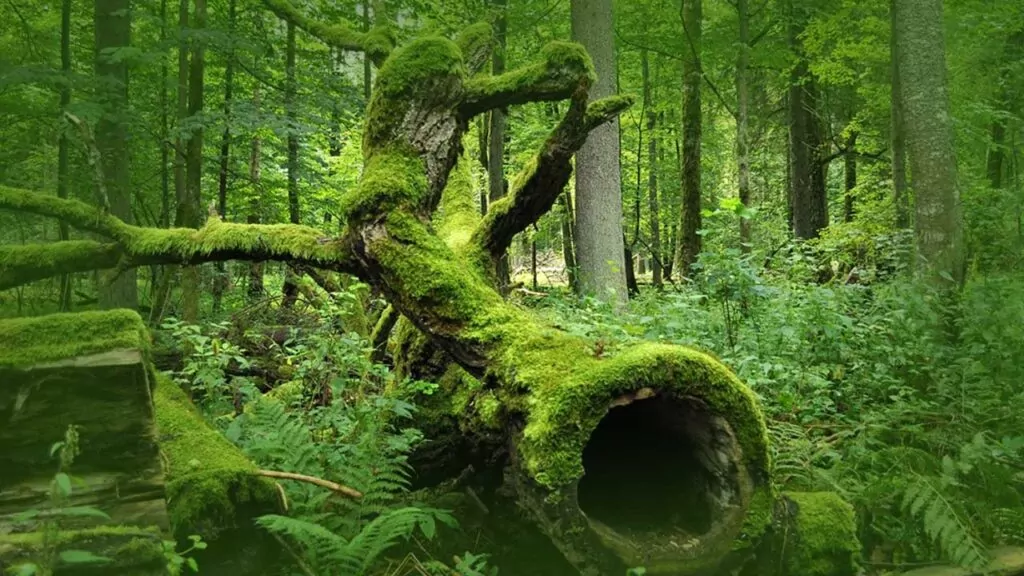
Nestled on the border between Poland and Belarus, Białowieża Forest is a natural wonder that transports visitors back in time. This ancient woodland is one of the last and largest remaining parts of the primeval forest that once stretched across the European Plain.
Key features:
- UNESCO World Heritage site
- Home to Europe’s largest land mammal, the European bison
- Over 800 European bison roam freely in the forest
- Rich biodiversity with over 12,000 animal species
Visitors can explore the forest through guided tours, hiking trails, and even take a ride on a narrow-gauge railway that winds through the lush landscape. The Białowieża National Park Museum offers insights into the forest’s ecosystem and conservation efforts.
2. Kazimierz Dolny
Perched on the banks of the Vistula River, Kazimierz Dolny is a picturesque town that seems frozen in time. Once a thriving center of trade in the 16th and 17th centuries, it now stands as a testament to Renaissance architecture and Polish artistic heritage.
Highlights:
- Well-preserved Renaissance architecture
- Vibrant art scene with numerous galleries and studios
- Scenic location along the Vistula River
- Famous for its rooster-shaped bread, a local delicacy
Visitors can wander through the cobblestone streets, admire the ornate tenement houses in the town square, and climb the hill to the ruins of the 14th-century castle for panoramic views of the surrounding countryside.
3. Książ Castle
Hidden in the forests of Lower Silesia, Książ Castle is a fairytale-like structure that boasts a complex history spanning over 700 years. It’s the third-largest castle in Poland and a testament to the region’s tumultuous past.
Notable features:
- Eclectic architectural styles, from medieval to baroque
- Underground tunnels built during World War II
- Surrounded by picturesque gardens and terraces
- Rich in legends and mysteries
The castle offers guided tours that delve into its fascinating history, including its occupation by Nazi Germany during World War II and the rumors of hidden Nazi gold. The surrounding Książ Landscape Park provides excellent hiking opportunities.
4. Zalipie: The Painted Village
In the southeastern part of Poland lies a village that seems to have sprung from the pages of a storybook. Zalipie, known as the “Painted Village,” is famous for its colorful floral motifs that adorn the houses, barns, and even dog kennels.
Unique aspects:
- Tradition of painting floral designs dates back to the 19th century
- Annual competition for the most beautifully decorated cottage
- House of Felicja Curyłowa, preserved as a museum
- Workshops where visitors can learn the traditional painting technique
This charming village offers a glimpse into rural Polish life and a unique folk art tradition that has been passed down through generations. The best time to visit is during the Painted Cottage competition held annually after Corpus Christi.
5. Bieszczady Mountains
For nature lovers and hikers, the Bieszczady Mountains in southeastern Poland offer a wilderness experience unlike any other in the country. This remote mountain range is part of the Carpathian Mountains and is known for its distinctive meadows called “połoniny.”
Key attractions:
- Bieszczady National Park, home to diverse wildlife, including bears and wolves
- Unique treeless mountain meadows with stunning views
- The Bieszczady Forest Railway, a narrow-gauge railway through the mountains
- Traditional wooden Orthodox and Greek Catholic churches
The region is perfect for hiking, with well-marked trails leading to panoramic viewpoints. In winter, it transforms into a serene landscape ideal for cross-country skiing and snowshoeing.
6. Kłodzko Fortress
Nestled in the picturesque Kłodzko Valley, the Kłodzko Fortress is a marvel of military architecture that has stood guard over the region for centuries. This massive stronghold, often called the “Silesian Gibraltar,” offers a fascinating glimpse into European military history.
Key features:
- Construction began in the 17th century, with expansions over the years
- Extensive network of underground tunnels and chambers
- Panoramic views of Kłodzko and the surrounding valley
- Museum showcasing military artifacts and local history
Visitors can explore the fortress’s ramparts, bastions, and underground passages through guided tours. The fortress also hosts historical reenactments and cultural events throughout the year, bringing its rich past to life.
7. Świdnica Peace Church
In the heart of Lower Silesia lies a true architectural gem – the Świdnica Peace Church. This UNESCO World Heritage site is one of the largest timber-framed religious buildings in Europe and a symbol of religious tolerance.
Notable aspects:
- Built in the 17th century, following the Peace of Westphalia
- Intricate baroque interior with stunning paintings and sculptures
- Capacity for 7,500 people
- Constructed without nails, using only wood, straw, and clay
The church’s history is as impressive as its architecture. Built by Protestants when the region was under Catholic Habsburg rule, it stands as a testament to religious coexistence. Guided tours offer insights into the church’s construction and historical significance.
8. Słowiński National Park
Along the Baltic coast lies a landscape that seems otherworldly – the shifting sand dunes of Słowiński National Park. Often called the “Polish Sahara,” this unique ecosystem offers visitors a chance to experience desert-like conditions in Northern Europe.
Highlights:
- Moving dunes that can reach heights of up to 40 meters
- Rich birdlife, with over 260 species recorded
- Two large coastal lakes: Łebsko and Gardno
- Remnants of ancient forests buried by the shifting sands
Visitors can hike across the dunes, enjoying breathtaking views of the Baltic Sea. The park also offers opportunities for birdwatching, kayaking on the lakes, and exploring the quaint fishing villages on its outskirts.
9. Wieliczka Salt Mine
While not exactly hidden, the Wieliczka Salt Mine often gets overshadowed by more famous Polish attractions. Yet, this underground marvel, located just outside Krakow, offers a unique journey into the depths of the earth and centuries of mining history.
Key attractions:
- UNESCO World Heritage site
- Over 300 km of tunnels spread across nine levels
- Underground lake, 135 meters below ground
- stunning chapel carved entirely out of salt
Guided tours take visitors through chambers and tunnels adorned with salt sculptures and intricate carvings. The mine also hosts concerts, underground dining experiences, and even health treatments in its unique microclimate.
10. Toruń Old Town
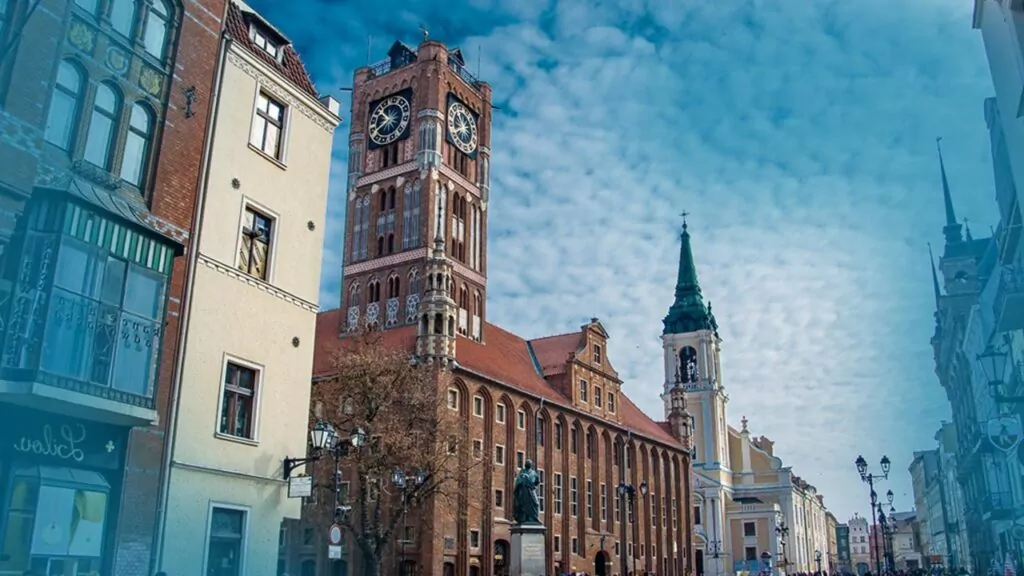
Birthplace of astronomer Nicolaus Copernicus, Toruń is a medieval gem that often flies under the radar of international tourists. Its well-preserved old town, a UNESCO World Heritage site, offers a journey back to the golden age of the Hanseatic League.
Notable features:
- Gothic architecture, including the impressive Town Hall
- Medieval city walls and gates
- Leaning Tower of Toruń
- Famous for its gingerbread, with museums dedicated to this sweet treat
Visitors can wander through narrow streets lined with colorful burgher houses, climb the town hall tower for panoramic views, and visit the house where Copernicus was born. Don’t forget to try the local gingerbread, made using recipes dating back to the Middle Ages.
11. Ojców National Park
Just a short drive from Krakow lies the smallest but one of the most picturesque national parks in Poland. Ojców National Park is known for its dramatic limestone cliffs, medieval castles, and unique rock formations.
Key attractions:
- Unique rock formations, including the famous “Hercules’ Club,”
- Ruins of medieval castles, including Ojców and Pieskowa Skała
- Over 400 caves, with some open for exploration
- Rich flora and fauna, including rare bat species
The park offers numerous hiking trails that wind through forests, alongside streams, and past limestone cliffs. The Trail of the Eagle’s Nests, connecting a series of medieval castles, passes through the park and offers a combination of natural beauty and historical intrigue.
12. Łódź: The City of Murals
Once a thriving industrial center, Łódź has reinvented itself as a hub of art and culture. The city’s transformation is perhaps best exemplified by its impressive collection of large-scale murals that adorn buildings throughout the urban landscape.
Highlights:
- Over 150 large-scale murals by both Polish and international artists
- Piotrkowska Street, one of the longest commercial streets in Europe
- Manufaktura, a revitalized 19th-century textile factory complex
- The “Księży Młyn” district, showcasing restored industrial architecture
Visitors can take guided tours or create their own routes to discover the city’s impressive street art. The murals range from whimsical and colorful to thought-provoking and politically charged, offering a unique perspective on urban renewal and artistic expression.
13. Biebrza National Park
In northeastern Poland lies a vast expanse of pristine wetlands and marshes – the Biebrza National Park. This ecological treasure is a haven for nature lovers and birdwatchers, offering a glimpse into one of Europe’s last great wilderness areas.
Key features:
- Largest national park in Poland, covering nearly 60,000 hectares
- Home to over 270 bird species, including many rare and endangered ones
- Extensive network of hiking and kayaking trails
- Unique peat bog ecosystem
Visitors can explore the park through guided tours, kayak expeditions, or by following the numerous nature trails. The park is particularly famous for its elk population and as a stopover for migratory birds. Spring and early summer are ideal times to visit when the marshes come alive with bird calls and blooming wetland flowers.
14. Malbork Castle
While not exactly hidden, Malbork Castle often gets overlooked by visitors focused on Poland’s more famous cities. Yet, this UNESCO World Heritage site is the largest castle in the world by land area and a masterpiece of medieval architecture.
Notable aspects:
- Built in the 13th century by the Teutonic Knights
- Covers nearly 21 hectares (52 acres)
- Showcases medieval construction techniques and Gothic architecture
- Houses museums with extensive collections of amber, arms, and armor
Guided tours take visitors through the castle’s three main sections: the High Castle, Middle Castle, and Lower Castle. The castle also hosts medieval reenactments, night tours, and a popular light and sound show during summer evenings.
15. Drawsko Lake District
For those seeking tranquility and natural beauty, the Drawsko Lake District in northwestern Poland offers a perfect escape. This picturesque region is dotted with over 250 lakes, surrounded by lush forests and charming small towns.
Highlights:
- Numerous lakes ideal for swimming, fishing, and water sports
- Extensive network of cycling and hiking trails
- Charming towns like Czaplinek and Złocieniec
- Opportunities for stargazing due to low light pollution
The region is perfect for outdoor enthusiasts, offering activities like kayaking, sailing, and fishing. The town of Czaplinek, situated between two lakes, serves as a great base for exploring the area. Don’t miss the chance to try local specialties like freshwater fish dishes.
Conclusion
Poland’s hidden gems offer a diverse array of experiences that go beyond the typical tourist trail. From ancient forests and shifting sand dunes to medieval castles and vibrant street art, these lesser-known destinations showcase the country’s rich natural beauty, complex history, and evolving culture.
Exploring these hidden gems allows travelers to discover a side of Poland that many miss. Whether you’re drawn to the tranquility of nature, fascinated by historical sites, or eager to experience unique cultural traditions, these 15 destinations offer something for every type of traveler.
As you plan your Polish adventure, consider venturing off the beaten path to these remarkable places. Each holds its own unique charm and story, waiting to be discovered. By exploring these hidden gems, you’ll gain a deeper appreciation for the diversity and beauty of Poland, creating memories that will last a lifetime.
Remember to travel responsibly, respecting local communities and natural environments. Many of these destinations are in protected areas or small communities, so sustainable tourism practices are crucial for preserving their beauty and integrity for future generations.
Poland’s hidden gems are testament to the country’s rich tapestry of experiences. They invite travelers to look beyond the obvious and discover the true heart of this captivating nation. So pack your bags, bring your sense of adventure, and prepare to be amazed by the hidden treasures of Poland.

